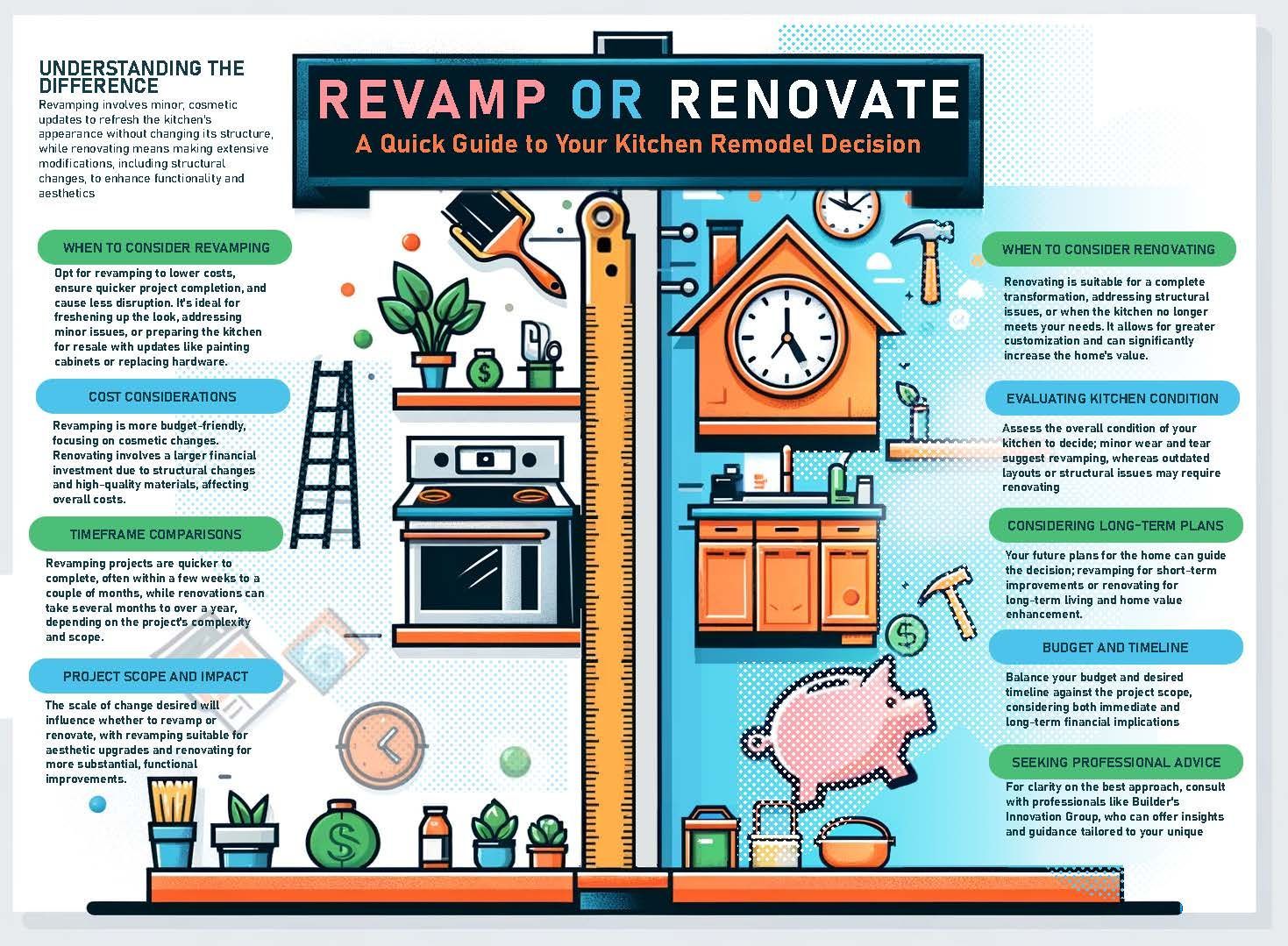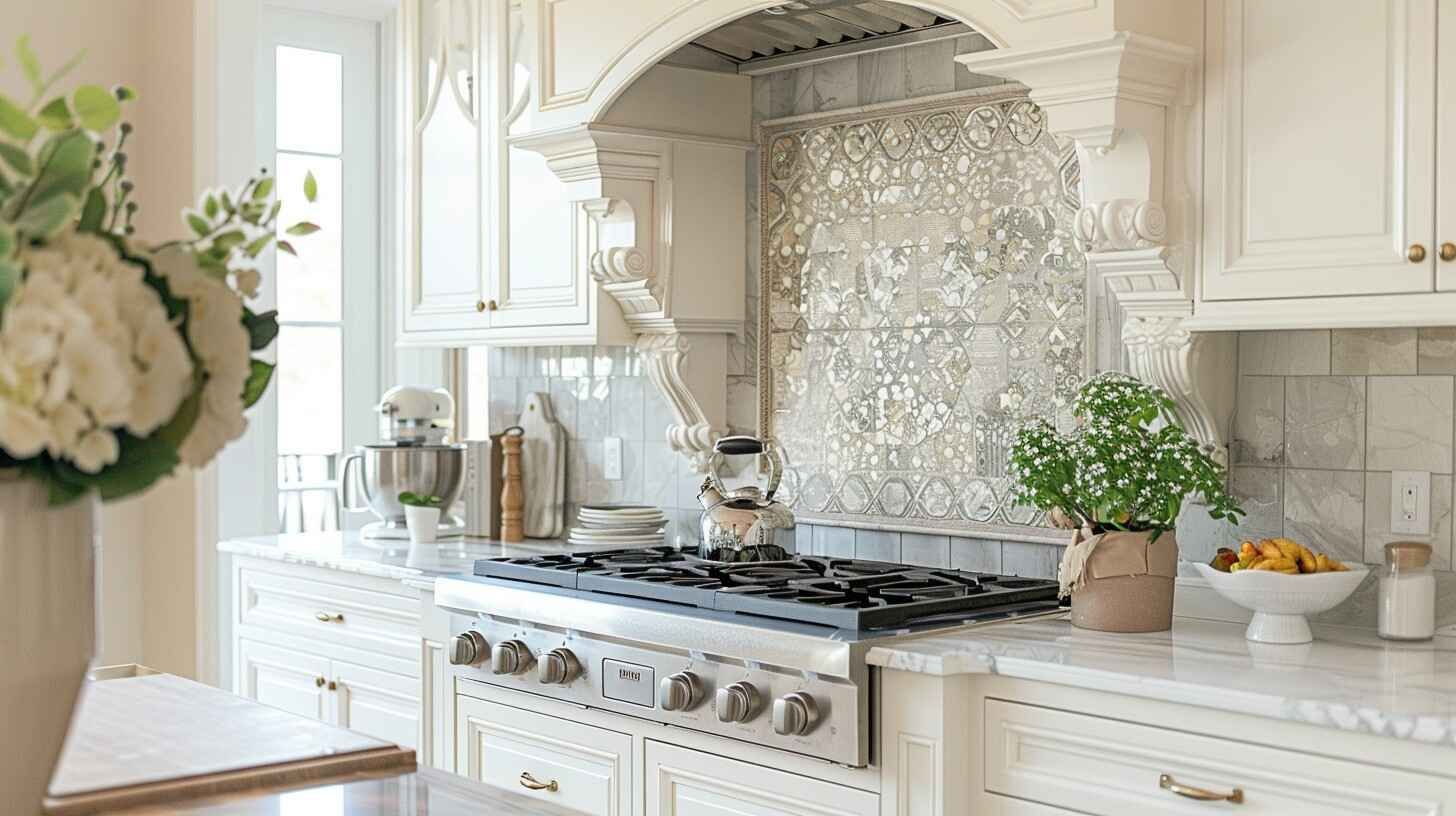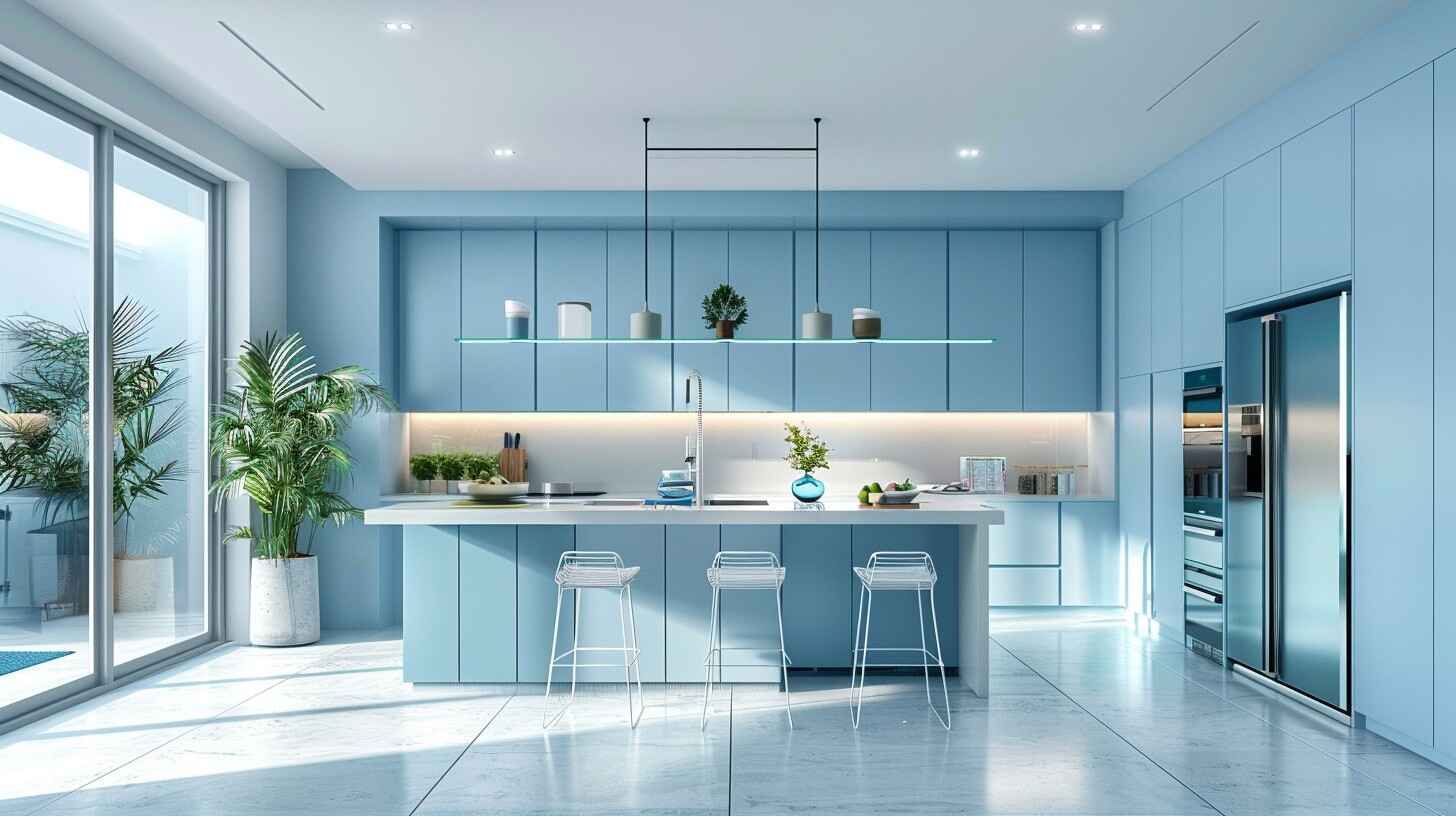Revamp vs. Renovate: Deciding the Best Approach for Your Kitchen Remodel

Understanding the nuances between revamping and renovating a kitchen is essential for anyone embarking on a remodeling journey. While the terms are often used interchangeably, they represent distinct approaches with varying degrees of change and investment. This blog aims to shed light on the differences between revamping and renovating, providing clarity for homeowners seeking to enhance their kitchen spaces. By comprehending these disparities, individuals can make informed decisions that align with their goals, preferences, and budgetary constraints.
Exploring the divergent paths of revamping and renovating is crucial for achieving desired outcomes in
kitchen remodeling endeavors. Through this blog, readers will gain insight into the defining characteristics of each approach, including their advantages, considerations, and suitable circumstances. Whether contemplating a subtle refresh or a comprehensive overhaul, this resource will equip readers with the knowledge needed to navigate the complexities of kitchen remodeling effectively.
Understanding the Difference
In the context of kitchen remodeling, "revamp" typically refers to making minor cosmetic changes or updates to refresh the appearance of the space without altering its fundamental structure. On the other hand, "renovate" involves more extensive modifications, including structural changes, replacing fixtures, and upgrading appliances to enhance functionality and aesthetics. The key distinction lies in the scale of changes and the level of investment required. For example, revamping might entail painting cabinets, updating hardware, and installing new countertops, whereas renovating could involve knocking down walls, installing new flooring, and reconfiguring the layout to optimize space and flow. These examples illustrate the varying degrees of transformation between revamping and renovating, highlighting the importance of understanding each approach before embarking on a kitchen remodeling project.
When to Consider Revamping
When considering revamping a kitchen, the advantages often include lower costs, quicker turnaround times, and less disruption to daily life compared to a full renovation. Revamping might be the best approach for homeowners looking to freshen up their kitchen's appearance, address minor functional issues, or prepare the space for resale without undertaking a major project. Examples of minor changes that constitute a revamp include painting cabinets, updating light fixtures, replacing hardware, refreshing backsplashes, and refinishing countertops. These relatively simple updates can breathe new life into a kitchen, providing a noticeable transformation while requiring less time and investment than a comprehensive renovation.
When to Consider Renovating
Renovating a kitchen presents several compelling advantages, notably the opportunity to completely transform the space to better suit your lifestyle and preferences. By renovating, homeowners can address structural issues, improve functionality, and incorporate modern design elements, ultimately increasing the value of their home. Renovation also allows for greater customization, enabling homeowners to create a kitchen that reflects their personal style and meets their specific needs. Renovation becomes necessary or beneficial in situations where the existing kitchen layout is outdated, dysfunctional, or no longer meets the household's needs. For instance, extensive water damage, inefficient layout, or inadequate storage space may warrant a renovation. Examples of major changes that constitute a renovation include knocking down walls to create an open-concept layout, installing new plumbing and electrical systems, replacing flooring with high-quality materials like hardwood or tile, upgrading to energy-efficient appliances, and installing custom cabinetry to maximize storage and organization. These significant changes distinguish renovation from mere revamping and are essential for achieving a truly transformative kitchen space.
Factors to Consider
When comparing budget considerations for revamping versus renovating a kitchen, it's essential to recognize that the scope of the project significantly influences costs. Revamping tends to be more budget-friendly as it involves primarily cosmetic updates and minor changes. Homeowners can often accomplish revamping projects with a smaller budget by focusing on affordable cosmetic upgrades such as painting cabinets, replacing hardware, or updating lighting fixtures. On the other hand, renovating a kitchen typically requires a more substantial financial investment due to the involvement of structural changes, appliance upgrades, and possibly even layout alterations. Renovation costs can vary widely depending on the extent of the changes desired, the quality of materials chosen, and whether professional contractors are hired.
In terms of timeframe, revamping projects generally have shorter durations compared to renovations. Since revamping involves cosmetic updates and minor changes, it can often be completed within a few weeks to a couple of months, depending on the scale of the project and availability of materials. Renovation projects, on the other hand, tend to require more time due to the complexity of the work involved. Depending on the scope of the renovation, homeowners should anticipate a timeframe ranging from several months to a year or more. Factors such as structural modifications, custom cabinetry, and waiting for permits can contribute to longer project timelines. Ultimately, the desired level of change and customization, as well as the impact on resale value, should be carefully weighed against budget and timeframe considerations to make an informed decision about whether to revamp or renovate the kitchen. While revamping may offer a more cost-effective and time-efficient solution for minor updates, renovating provides an opportunity for more significant enhancements that can potentially increase the home's resale value in the long term.
Making the Decision
Assessing your goals and priorities for the kitchen remodel is crucial in determining whether to revamp or renovate. Consider factors such as your budget, timeline, desired level of change, and the overall condition of your kitchen. Next, weigh the pros and cons of revamping versus renovating based on your specific circumstances. Evaluate the extent of changes you want to make, the available resources, and your long-term plans for the space. If you're unsure about which approach is best suited to your needs, seek input from professionals like
Builder's Innovation Group. Their expertise can provide valuable insights and guidance tailored to your unique situation, helping you make an informed decision that aligns with your goals and priorities for the kitchen remodel.



